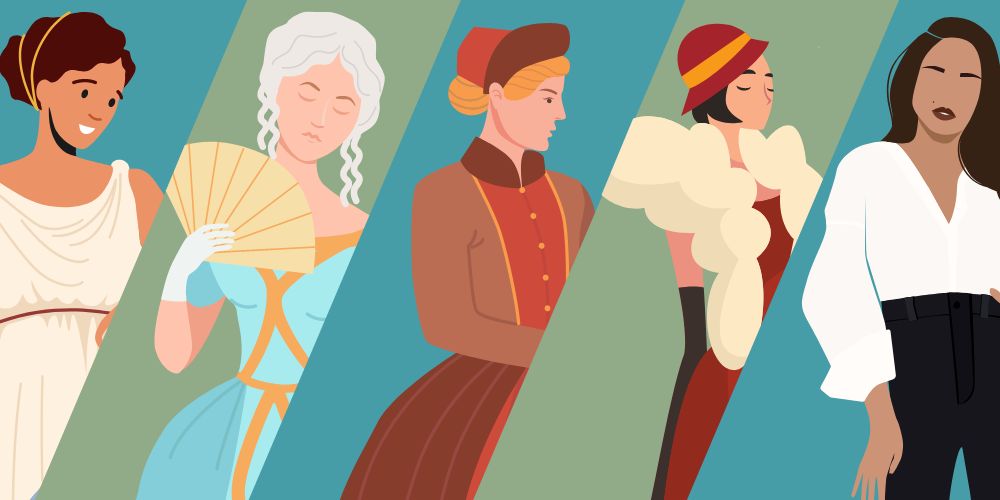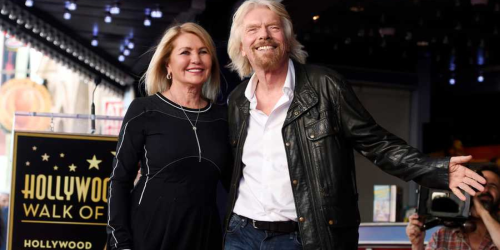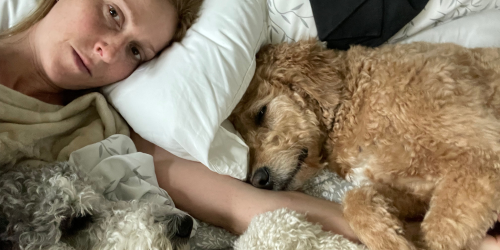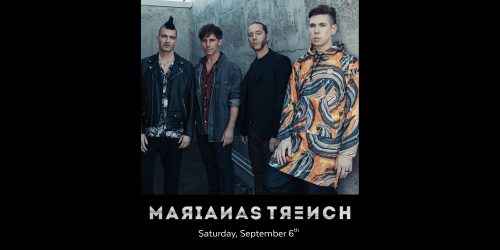The Perfect Woman: How Beauty Has Evolved Since Ancient Times

Beauty standards have evolved over the years, reflecting changing societal values, cultural norms, and technological advancements. From ancient civilizations to the modern era, different notions of beauty have emerged and evolved, shaping how people perceive themselves and others.
Over the years, people have resorted to different tricks to help them reach that ideal. And some of these have been downright dangerous. But our idea of “the perfect woman” and what’s beautiful is always changing; from one culture to another and from one era to the next.
To put it into perspective, here are some of the beauty ideals over the centuries (and some of the crazy things people did to meet those standards).
Ancient Egypt (circa 1292 to 1069 BCE)
In ancient Egypt, the ideal woman was slender with narrow shoulders, a high waist, and a symmetrical face. They had thin legs, muscles, and brown hair. Women in ancient Egypt lived in a sex-positive environment where pre-marital sex was not frowned upon and divorce was not something to be ashamed of.
Ancient Rome (circa 753 BCE to 476)
In ancient Rome, curvy women with prominent hips were the vision of beauty. They had larger facial features with nose humps being a sign of aristocracy. Many Romans were dark-haired, which made blonde hair rare and, therefore, covetable. Many women bleached their hair with goat milk oil and beech ash.
Ancient Greece (circa 500 to 300 BCE)
In ancient Greece, beauty was an obsession. Physical attractiveness was proof that you were good, so it became a near necessity.
Men generally faced more scrutiny about their beauty than women but the ideal woman still existed. She was plump, full-bodied, and had fair skin. In fact, women would use ceruse, a paste that is now known to be toxic, to lighten their skin.
Red and blonde hair were also admired, along with women who had blue eyes, a high forehead, and a straight nose.
Middle Ages (circa 476 to 1400)
Beauty ideals began to change in the middle ages, with the church influencing peoples’ appearance. To be deemed beautiful, women were to be small-chested with thin lips and arms. To constrain chests, women's breasts were bandaged down. Hairstyles and headdresses became more commonplace as well, with women ensuring their hair was carefully hidden.
Makeup was frowned upon, though red cheeks and blue eyes were idealized. Fertility was also fashionable. So much so that women who were not expecting would wear dressed that draped over the belly.
Italian Renaissance (circa 1300 to 1600)
Women who lived at this time were expected to reflect their husband’s status in the way they acted and looked.
During the Italian Renaissance, the ideal woman had a large bosom, rounded stomach, and full hips. Light hair was also a sign of beauty with some women bleaching their locks with sulfur and the sun.
Beauty of the face also came back into fashion, being viewed as a gift from god. Like many of the eras to follow, pale skin was seen as a sign of social status. Women who had the luxury of relaxing indoors, instead of working the fields, would not have sun-tinted skin. Rosy cheeks were also a common sign of beauty. To achieve pale skin and red cheeks, women used leeches to draw the blood out of their faces.
The Elizabethan Era (circa 1558 to 1603)
During the reign of Elizabeth I, Rubenesque women were all the rage. To be seen as beautiful, women had to be plump and pale with perfect skin and light hair. Urine was commonly used to lighten hair while potentially toxic makeup was used to lighten the skin.
FUN FACT: Rebenesque women have the characteristics of women from Rubens' paintings of voluptuous female nudes.
Baroque Era (circa 1600s and 1700s)
The Baroque era was led by the French. Beauty ideologies still favoured a curvy figure but thin waists and swan necks were also emphasized. To thin the waist and raise the bust, women wore corsets. Big skirts and wigs were also very common during this time in fashion.
BONUS FACT: Corsets date back to 1600 BCE but did not gain prominence until the Middle Ages when they were worn by royalty in Europe.
Rococo Era (circa 1740 to 1770)
At the end of the 1700s, Rococo fashions began to emerge. This era replaced vivacious forms with slenderness, grace, and fragility. Thin waists and voluptuous hips were still in fashion with women wearing puffy skirts to accentuate the difference.
Regency Era (circa 1811 to 1820)
Author Jane Austen wrote many of her novels during the Regency era, which provides a glimpse into what was deemed beautiful at the time. Ideally, a woman was plump in her body and face. This would be a sign of wealth.
Pale skin, curls, and dimples were also a sign of beauty in this period.
Victorian England (circa 1830s to 1900s)
Women in early Victorian England were seen as beautiful if they were plump, full-figured, and clinched at the waisted. This look was achieved using tight-fitting corsets and undergarments that gave the perception of an hourglass.
Bright eyes were also a sign of beauty in Victorian England. For those who weren’t naturally graced with this feature, an eye concoction made of belladonna was used. It did brighten their eyes but because of its toxicity, it also wrecked their sight.
Pale skin was still seen as a symbol of status and women would draw fake veins on their skin to appear more translucent.
In the later years of this era, women returned to no makeup and wearing hats with religion dictating what a proper woman looked like.
The Gibson Era (circa 1910s)
In the 1910s, the ideal woman was defined by Charles Dana Gibson illustrations. These women began to appear in the early 1890s but did not catch on for another 20 years. These women were tall and slender with big hair as well as voluptuous hips, bosoms, and butts.
But the Gibson Girl was more than physical beauty. The perfect woman would be athletic, play instruments, or shop when she wasn’t tending to her looks.
The Roaring Twenties (circa 1920s)
The ideal woman during the roaring twenties was much more androgynous with beautiful women having a more masculine form. They had flat chests and downplayed waists. To achieve this look women even wore undergarments that flattened their chests and dresses that didn’t emphasize the waist.
Hairstyles also changed with women opting for a short bob. Long hair was no longer a sign of beauty and desirability.
But this era didn’t last for long …
The Golden Age Of Hollywood (circa 1930s to 1950s)
During this era, the perfect woman had curves, an hourglass figure, an ample bosom, and a slim waist.
As World War II loomed, fashions began to evolve. The most beautiful women still looked like they did at the beginning of the era. But suddenly they had a more military look with long legs, angular features, and broad shoulders.
The Swinging Sixties (circa 1960s)
During the 1960s, the ideal woman maintained a teenage figure with a willowy body and thin with long slim legs. Tanned skin also became more commonplace with more people spending time outdoors and traveling to sunny locales.
While clothes had been more muted and conservative up until now, women were beginning to show more skin and wear more colourful clothes and makeup.
The Supermodel Era (circa 1980s)
Heading into the 1980s, the ideal woman was thin but curvy, tall, and had dramatic cheekbones. Looking athletic was all the rage, which is no surprise with the exercise craze that erupted in the 80s.
Big hair and bold makeup were also becoming a staple of the beautiful woman.
Homeless Chic (circa 1990s)
During the 1990s, the ideal woman was extremely thin and androgynous with nearly translucent skin. Looking frail, neglect, and withdrawn was all the rage with models like Kate Moss plastering magazine covers.
Many called the look waif chic or homeless chic.
The New Millenium (circa 2000 to 2010)
Heading into the early 2000s, exposed midriffs, glossy lips, fake tans, and fun, casual vibes were all the rage. Every young girl wanted to be a pop star.
Too skinny to be healthy was still trending but as the era proceeded, pushback against thinness began. In the later 2000s, healthy curves came back in style along with glowing skin and everchanging hairstyles and colours.
Celebrities like Beyonce and J-Lo were being celebrated for their voluptuous figures.
Modern Era (circa 2010s to Present)
Following the first decade of the millennium, the ideal woman was someone who has a flat stomach, healthy skin, large breasts and butt, and a thigh gap. Celebrities like Kim Kardashian were the poster children of this generation.
Today, we’ve moved to a space where we accept imperfections and understand that there isn’t a one size fits all approach to beauty. But acceptance hasn’t eliminated the perfect woman. In every part of the world, an “ideal” female look still exists.
While skinny with curves is still idealized, more emphasis is being put on living a healthy lifestyle with more people moving away from toxic products and harmful practices to focus on safer and more natural alternatives.
Beat FOMO by being in the know!
Sign up for our newsletter today and never miss a beat.







